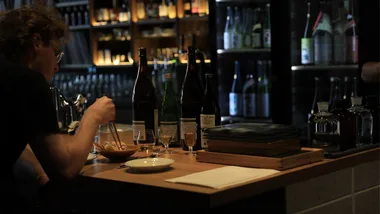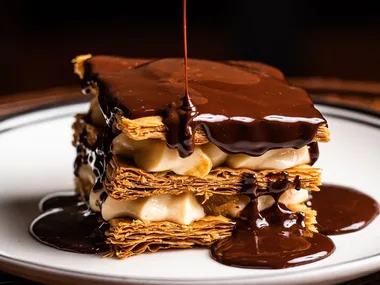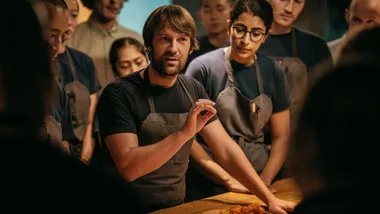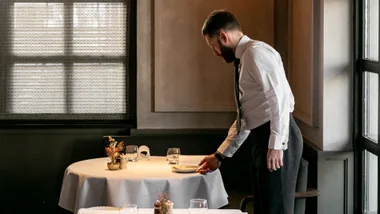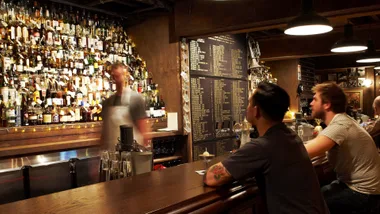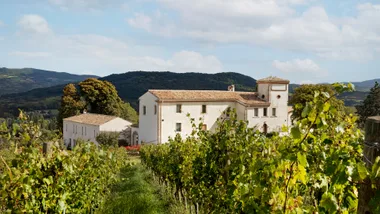This is article is sponsored by Green & Black’s.
Good chocolate producers need do very little in the way of marketing in order to amass a loyal following. Smooth, rich and velvety, chocolate will continue to sell itself.
However, the future of the chocolate industry is unstable with environmental issues such as global warming posing a threat to the growing conditions of fragile cocoa plants. Along with our escalating demand for newer and richer chocolate flavours, consumption rates are also continuing to rise.
How do we safeguard the future of the industry in a way that doesn’t negatively impact the environment or the communities working to produce our chocolate?
GT sat down with Craig Sams and Jo Fairley, founders of sustainable chocolate brand Green & Black’s — a brand that earned the UK’s first Fairtrade mark — to discuss the most pressing concerns facing the chocolate manufacturing industry today and what consumers need to know before deciding which brand to buy.
What is sustainable chocolate?
Sustainability is defined as meeting the needs of the present without compromising the ability of future generations to meet their needs. In other words, our enjoyment of chocolate should not limit our grandchildren’s opportunity to enjoy chocolate.
As long chocolate consumers are aware of the issues surrounding its production and choose wisely when purchasing, they are the ultimate force who will determine whether chocolate is sustainable or not.
How do sustainable and regular chocolate production chains differ?
The main factor is at farmer level. It used to be that 90 per cent of all cacao was bought from anonymous sources with no concern for the conditions in which it was produced. Thankfully that is now shifting and many companies now either deal direct with growers or demand to know the circumstance from which it was sourced.
What are the biggest concerns facing the chocolate industry?
One of the most confronting stats that really struck us is the fact the average age of a Ghanaian cocoa farmer is now over 50 years. When life expectancy in the country is in the early to mid sixties, this highlights the very real threat the future of cocoa supply faces.

Another concern is the increased demand for chocolate in China, where the market has doubled in the past couple of years and is still only one tenth of European consumption rates. In general, people are also moving away from lighter, milky chocolate to dark chocolate or even darker shades of milk and that means more cocoa beans per bar.
Climate change is another concern as it affects weather patterns so cacao farmers are at the mercy of unstable climatic conditions that can affect productivity. Because all cocoa is grown within about 20 degrees north or south of the equator, the growing conditions and impacts are much the same.
Can you explain Green & Black’s sustainability practices?
Green & Black’s was founded on the commitment that we will grow our business by protecting the wellbeing of the planet. It’s what our employees, customers and consumers want, and it is the right thing for the planet.
Historically cocoa was purchased by intermediaries who then sold it to traders who then sold it to chocolate companies. In Central America they called these traders ‘coyotes’ because they paid farmers the lowest price possible.

When we founded Green & Black’s, because we were organic, we had to build direct relationships with the farmers based on fair pricing and trust. We earned the first-ever Fairtrade Mark certification as a result in 1994.
When we founded the brand, it all started with a 70 per cent cocoa solid block which was a much higher level of cocoa solids than anyone had done before. When customers requested a milk chocolate as well, we created one that contained high levels of cocoa (38 per cent) for a richer, creamy taste.
Today, the Green & Black’s range still maintains the highest standards of quality and the new Smooth dark chocolate range uses 70 per cent cocoa beans that are especially selected to give a taste that is rich in cocoa yet exceptionally smooth in flavour. There are a range of flavours like Roasted Almond, Salted Caramel, Orange Almond and Mint.
What is Cocoa Life?
Cocoa Life was launched in 2012 on that same principle of direct relationships with farming communities, and took it to a whole new level.
The program works to secure the next generation of cocoa farmers by partnering with NGOs such as Save the Children and World Vision, in communities that supply cocoa for Green & Black’s chocolate, to deliver social and environmental change.
It supports farmers and grows communities by providing training, improving agricultural practices and investing in those things communities tell us they need such as education, medical services and access to clean water.
How can consumers support ethical production chains?
The main thing is to support companies that are making an effort. While some chocolate companies support forest protection, there is still some way to go in ensuring the farmers are treated fairly, that gender and child labour issues are fully addressed and that farmers are educated on the best farming practices to sustain them into the future.
What are the environmental benefits of sustainable chocolate?
In Belize, we saw all sorts of unforeseen effects. Protecting forest cover meant there were more migratory birds — many of the world’s birds spend the summer in temperate zones but head for the tropics when it gets cold. That also means more water and cleaner water in the growing areas and less need for inputs like fertiliser and pesticides.
What does the future of the chocolate industry look like?
There has been growth in dark chocolate, with people looking for richer experiences and flavours. There is also an increasing interest in where chocolate is from and how it is made, and consumers are increasingly looking for brands that are built on ethical and sustainable principles. Of course, indulgence and taste are always going to be important though, it is chocolate after all.

What are some interesting ways to use chocolate?
When we started out, Linda McCartney complained that our 70 per cent dark chocolate didn’t work with her mother’s brownie recipe. So, we broke down her recipe and rejigged it to allow for the high cocoa solids content of our chocolate. She was delighted and her family were able to eat their grandma’s brownies but now with Green & Black’s.
Nowadays, the possibilities for cooking with dark chocolate are endless: Brigadeiros, tiramisu, chocolate soufflé, coffee chocolate and walnut cake, chocolate pear and ginger tart, chocolate swirl shortbread, just to name a few.
Mexican ‘mole poblano’ sauces for turkey or chicken are a savoury alternative — sometimes left for a day to let the flavours fully develop — that is surprisingly compelling. Or it could be just as simple as pairing with your favourite wine (try a Pinot Noir with Green & Black’s 70 per cent dark), or enjoying the new Smooth Dark Chocolate Orange & Almond as the perfect accompaniment to a cup of Earl Grey tea.
This is article is sponsored by Green & Black’s.



